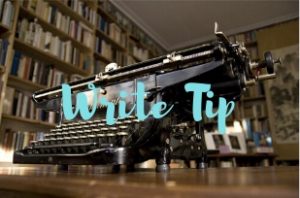 Flashing back to Feb. 2012 when I posted this post that I think might be useful to some of you still.
Flashing back to Feb. 2012 when I posted this post that I think might be useful to some of you still.
Ahhhh punctuation. A gift and yet a bane for us all, isn’t it? Editors fix way too much of it. Writers get confused and abuse too much of it. And the rest of the world scratches their head and gives up with a bevy of messages which start to look like this: cumin 2c u ok so b thr & b readE.”
Sigh.
Today’s Write Tip is the first in what will be an ongoing series on Editing. Why am I starting with this? Because it came up first in my freelance editing and I think it’s an area all of us need clarification on. I keep my rule of thumb handy and refer to it regularly, so here goes.
Let’s examine the most common special punctuation characters we encounter:
… Ellipses
— Em dash
– En dash
– Hyphen
Here’s my simple rules for their use, based on reviewing several style guides and online resources as well as grammar books. Yes, some variations do exist, but those can get pretty complicated. If you follow these simple rules, you’ll please most people, and at least use them well. (You can’t please everybody, so let’s not pretend that we can.)
RULE OF THUMB:
Ellipses (…)
An Ellipses (…) is appropriate if the speaker trails off leaving an incomplete sentence.
Example:“Well, I was going to talk about it, but…”
This could end a sentence or be mid-paragraph as their mind wanders:
Example: “Well, I was going to talk about it, but…hey, cool hat! I really like that. So where was I?”
Ellipses are also used for omission of words, phrases, lines or paragraphs from a quote, in which case they replace the missing portion(s).
Ellipses can also be used for missing or illegible words.
Example: “Bryan Thomas Schmidt’s “The Worker Prince” will appeal to readers of all ages…deftly explores a world where those who believe in one God labor against oppressors, and a single man may have the power to change their situation for the better….” — Brenda Cooper, Author of The Silver Ship and the Sea and Mayan December
One last note: Ellipses at the end of a sentence should always be followed by a period thus …. at the end of the quote above.
Em dash (—)
An Em dash (—) is for when the speaker is cut off either by an event or another speaker.
Example: “I think we may have a problem here, but—” BOOM (car explodes).
Example: Tom was excited. “I think we may have a problem here, but—” “Just shut up and follow me!” Sara said and started running.
An Em dash (—) is also appropriate when a thought is interrupted with a clause such as: “The bass—the biggest fish Josh ever caught—was only six inches, don’t let him lie.”
En dash(–)
An En dash(–) is used when demonstrating numerical ranges such as 100–200 or when making compound adjectives with more than one word “pro–German Army campaign.” In this case, the pro–German Army are two words which must function together as one adjective.
The hyphen (-)
The hyphen (-) is often mistaken for a dash but a dash it is NOT. The hyphen (-) is for joining words, separating syllables, simple adjectives, such as “pro-German,” phone numbers, multi-word numbers, or in prefixes and suffixes.
Examples:
twenty-eight
co-star
ex-wife
girl-next-door
syl-la-bi-fi-ca-tion
fighter-sized
line-of-sight
shell-like
anti-intellectual
I hope you get the idea. All of these can be greatly abused, of course, and paragraphs wind up looking like this:
I was hoping…well, anyway…never mind. Would you like to go to the zoo—the new one—with me? It’s not really that far…just down in line-of-sight of twenty-eighth in that pro-Italian community, you know?”
This is simply abuse. Please remember that the purpose of punctuation is to provide clarity, not make things more complex or unclear. They are designed to help readers and speakers know where to pause, where the clauses come together, where lines of thought diverge, etc. So use them wisely. Remember that if your publisher or editor has a style guide or subscribes to specific manual, such as The Chicago Manual of Style, you really need to consult that guide first before finalizing usage to avoid problems. It’s a matter of being a pro.
I hope the above rule of thumb is helpful. It certainly helps me. I’ll be working on more of these. Do you have requests?
For more tips, come back next Wednesday. For previous WriteTips, click here.
 Bryan Thomas Schmidt is a national bestselling author/editor and Hugo-nominee who’s edited over a dozen anthologies and hundreds of novels, including the international phenomenon The Martian by Andy Weir and books by Alan Dean Foster, Frank Herbert, Mike Resnick, Angie Fox, and Tracy Hickman as well as official entries in The X-Files, Predator, Joe Ledger, Monster Hunter International, and Decipher’s Wars. His debut novel, The Worker Prince, earned honorable mention on Barnes and Noble’s Year’s Best Science Fiction. His adult and children’s fiction and nonfiction books have been published by publishers such as St. Martins Press, Baen Books, Titan Books, IDW, and more. Find him online at his website bryanthomasschmidt.net or Twitter and Facebook as BryanThomasS.
Bryan Thomas Schmidt is a national bestselling author/editor and Hugo-nominee who’s edited over a dozen anthologies and hundreds of novels, including the international phenomenon The Martian by Andy Weir and books by Alan Dean Foster, Frank Herbert, Mike Resnick, Angie Fox, and Tracy Hickman as well as official entries in The X-Files, Predator, Joe Ledger, Monster Hunter International, and Decipher’s Wars. His debut novel, The Worker Prince, earned honorable mention on Barnes and Noble’s Year’s Best Science Fiction. His adult and children’s fiction and nonfiction books have been published by publishers such as St. Martins Press, Baen Books, Titan Books, IDW, and more. Find him online at his website bryanthomasschmidt.net or Twitter and Facebook as BryanThomasS.
To download How To Write A Novel: The Fundamentals of Fiction free one book, click here.
To check out Bryan’s latest novels, click here.


Very well done. Clear and simple.